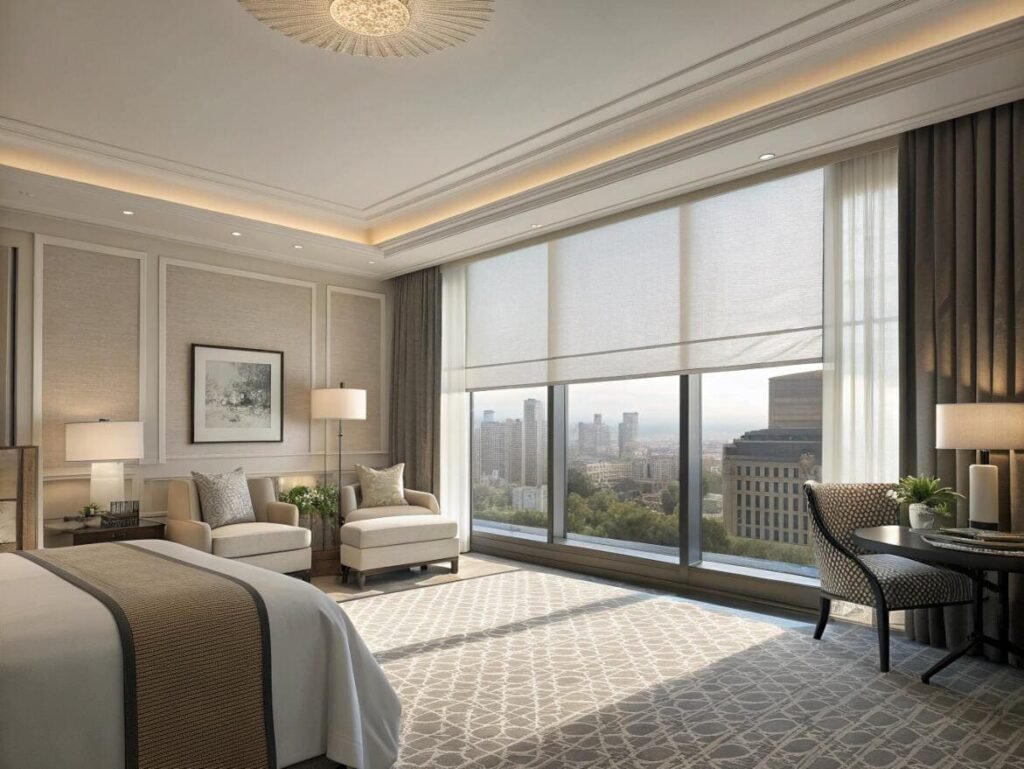Choosing between blackout and light filtering shades feels like more than just a style choice. It's a decision that impacts your privacy, energy bills, and even your sleep quality[^1].
Blackout shades block nearly all light, making them ideal for bedrooms and media rooms. Light-filtering shades soften daylight, reduce glare, and provide daytime privacy, suiting living areas and offices. The best choice depends on engineering a solution for each room's specific needs.

In my years providing shading solutions, I've seen this conversation evolve dramatically. It’s no longer a simple choice between "dark" and "bright." My clients, who are professional designers and contractors, are now asking detailed questions about privacy[^2] at night, impacts on sleep health[^3], and specific glare reduction performance. They are thinking like life quality engineers, designing a home's light management system from the ground up. This guide will walk you through that same thought process, helping you make a strategic, scientific choice for your project.
What are the pros and cons of light filtering shades vs. blackout shades?
You're trying to decide on the right opacity. You need to know the specific trade-offs between creating total darkness and allowing soft, natural light into a space.
Light-filtering shades offer a bright, welcoming feel and reduce glare, but provide limited nighttime privacy. Blackout shades provide complete light control and privacy, ideal for sleep, but can make a room feel too dark during the day.
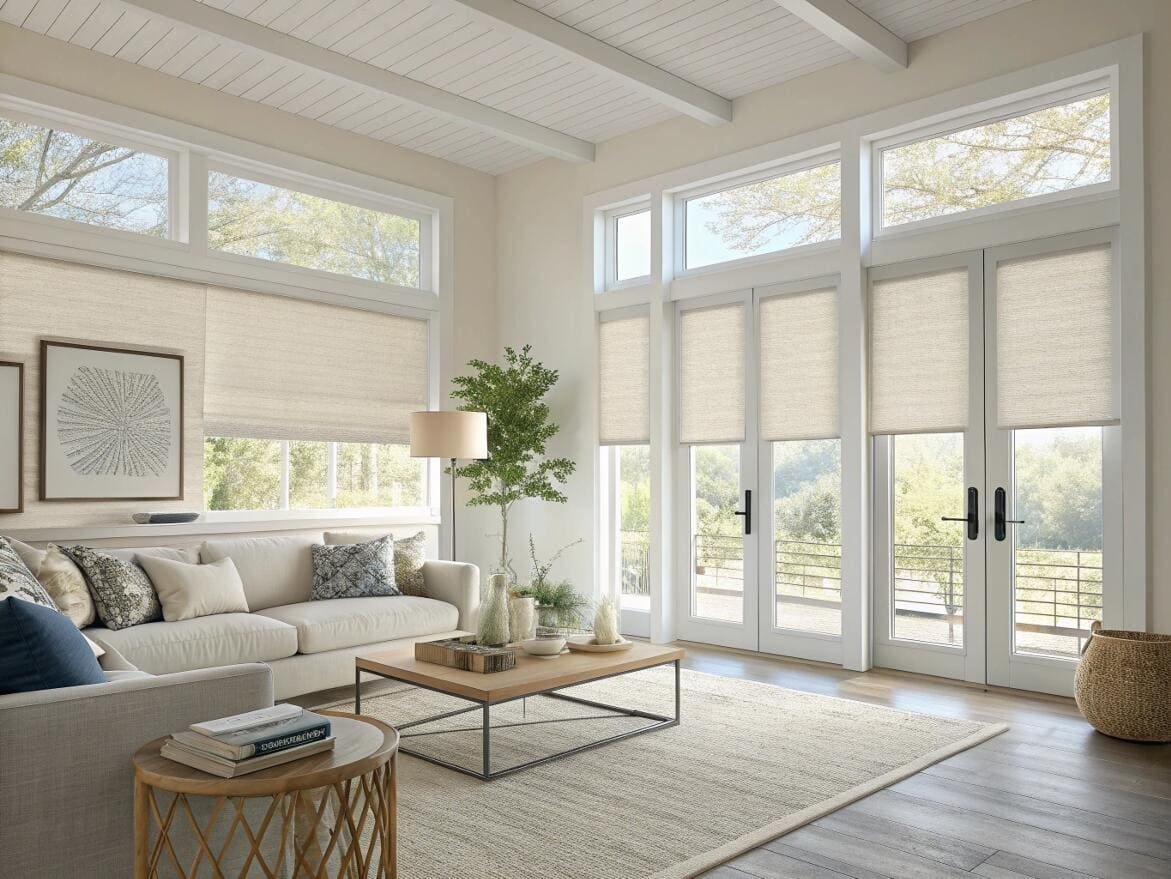
When I consult with a client, the first thing we do is map out the function of each room. Blackout shades are sought-after for bedrooms to ensure a quality night's sleep by blocking up to 99% or even 100% of light. This is great for sleep, but can be a con in a living room where you want to maintain a connection to the outdoors. Light-filtering shades are perfect for those common areas. They maintain views and let in natural light, which can boost mood and reduce the need for artificial lighting. However, their biggest con is that this effect reverses at night.
Performance Comparison: Light Filtering vs. Blackout
| Feature | Light Filtering Shades | Blackout Shades |
|---|---|---|
| Light Control | Softens and diffuses light. | Blocks 99-100% of light. |
| Daytime Privacy | Excellent, obscures view from outside. | Complete privacy. |
| Nighttime Privacy | Limited; silhouettes may be visible. | Complete privacy. |
| Glare Reduction | Good; reduces harshness on screens. | Excellent; completely cuts glare. |
| UV Protection | Good; blocks harmful rays. | Maximum; protects furniture from fading. |
| Best For | Living Rooms, Kitchens, Offices. | Bedrooms, Nurseries, Media Rooms. |
Can you see through light filtering shades at night?
This is the most critical question for clients concerned about privacy. You love the soft glow during the day, but you're worried about feeling exposed after sunset.
Yes, to some extent. At night, when your indoor lights are on and it's dark outside, it is easier to see through light filtering shades. The level of visibility depends on the fabric's opacity; sheer fabrics[^4] offer little privacy, while more opaque light-filtering options may only show shadows .

I always address this concern with total transparency because it's a major anxiety point for homeowners. The physics are simple: shades work based on the light differential. During the day, it's brighter outside, so people can't see in. At night, the lights inside your home reverse this effect, making you visible from the outside. Sheer fabrics will allow more detail to be seen, while denser light-filtering fabrics offer more obscurity. For true nighttime privacy, you either need a blackout option or a layered solution. This is a non-negotiable fact of light control that every project plan needs to account for.
Is there a shade I can see out of but people can't see in?
You're looking for that perfect "one-way mirror" solution. The dream is to have a clear view of the outside while maintaining complete privacy, day and night.
This is only possible during the day. "One-way" privacy is achieved with reflective films or certain solar shades that rely on the outside being brighter than the inside. At night, when lights are on indoors, this effect reverses, and people outside can see in.
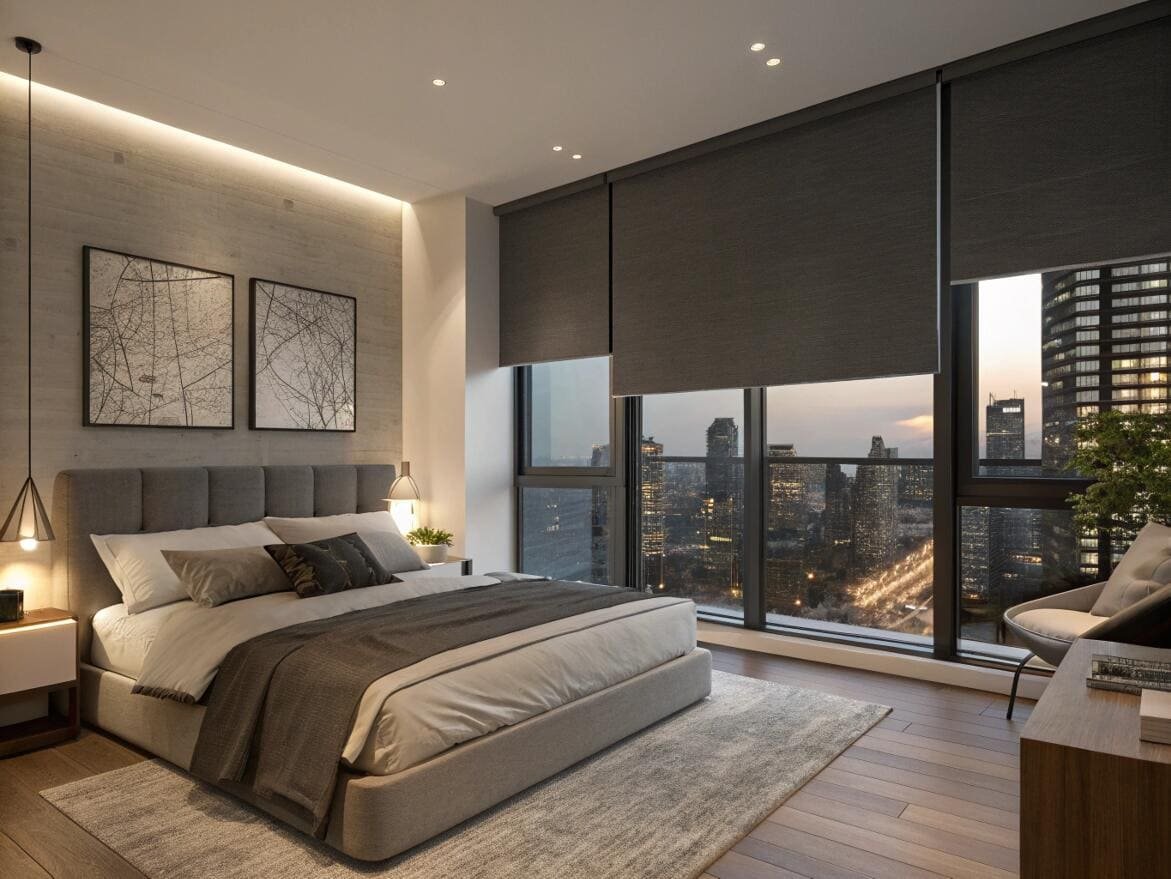
This is one of the biggest myths in the window treatment industry, and I make it a point to clarify it for my clients. There is currently no single shade or film that provides 24-hour one-way privacy. The technology works by reflecting the brighter light source. So, during the day, it reflects the sunlight, creating a mirror effect for those outside. But at night, it reflects the light from your lamps, turning your window into a display for anyone passing by. The best solution to achieve both daytime views and nighttime privacy is to use a dual shade system, which combines a light-filtering or solar shade with a separate blackout shade on the same bracket. This gives you the best of both worlds, engineered into one window.
Should bedrooms have blackout shades?
You're designing a bedroom and the goal is restful sleep. You're wondering if total darkness is just a preference or a biological necessity for good health.
Yes, bedrooms benefit greatly from blackout shades. Darkness is essential for the body's production of melatonin, the hormone that regulates your natural sleep-wake cycle. Blocking outside light supports deeper, more restorative sleep and helps maintain your circadian rhythm[^5].
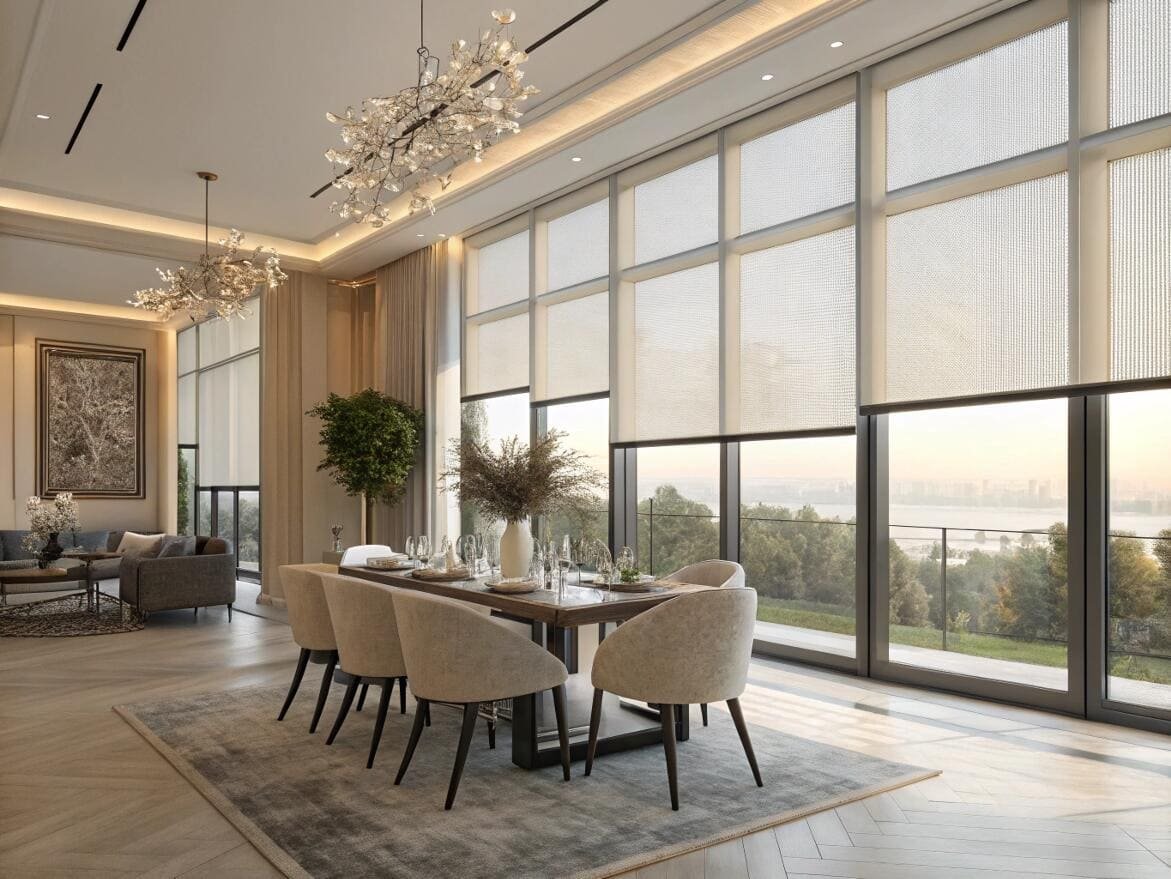
The conversation around light and sleep has become very scientific. It's not just about comfort anymore. Research shows that even small amounts of light from streetlamps or devices can pass through closed eyelids and disrupt our REM cycle . This disruption is linked to long-term health issues. Blackout curtains are a simple tool to create the "blackout cave" our bodies evolved to sleep in. For shift workers who need to sleep during the day, or for anyone living in a bright urban area, blackout shades are not a luxury—they are a health-first solution for a high-quality living environment.
Is it bad to sleep in a blackout room?
You've heard about the benefits of darkness for sleep. But you also wonder if sleeping in a completely blacked-out room could be unnatural or mess up your ability to wake up in the morning.
It's not bad to sleep in a blackout room; in fact, it's highly beneficial for sleep quality. The potential disadvantage is disrupting your natural wake-up cycle if the room remains dark past sunrise. This can be solved by opening the shades upon waking to get morning light exposure.
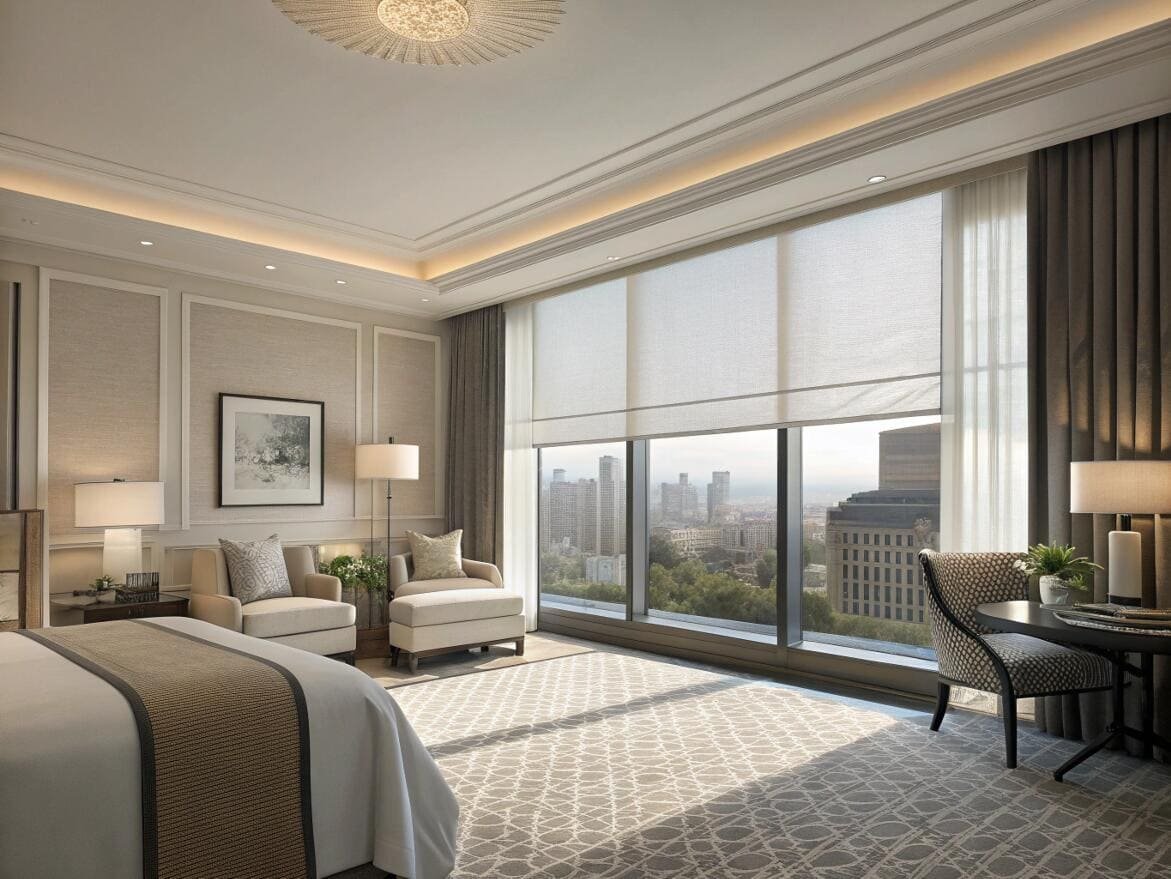
This is an excellent question that gets into the nuance of circadian rhythm optimization. Your body needs darkness to produce melatonin and initiate deep sleep. But it also needs light in the morning as a primary signal to wake up and stop producing melatonin. Morning light, especially blue light, makes you more alert and boosts your mood. The ideal, engineered solution is to use blackout shades for total darkness during your sleep period and then immediately expose yourself to bright, natural light upon waking. This is where motorized shades are a game-changer; you can schedule them to open automatically just before your alarm, mimicking a natural sunrise and aligning perfectly with your body's biological clock.
How do light-filtering and blackout shades impact energy efficiency?
Beyond light and privacy, you need to know how these shades perform as insulators. Reducing energy costs is a major goal for any modern building project.
Both shade types improve energy efficiency, but in different ways. Blackout shades are excellent thermal insulators, trapping heat in during winter and reflecting solar heat gain in summer. Light-filtering shades reduce solar heat gain while still allowing natural light, decreasing the need for both air conditioning and artificial lighting.

Windows are thermal weak points in any home, accounting for up to 30% of heating and cooling energy use. A well-chosen window treatment is a key part of a passive heating and cooling strategy. During the summer, about 76% of the sunlight that hits a standard window becomes heat inside the home. Highly reflective blackout shades can reduce this heat gain by up to 45-77% . During winter, closing shades at night can reduce heat loss by creating an insulating air gap. While cellular shades have the highest R-value for insulation, any quality shade provides a benefit. Automating these shades to close during peak sun in summer and open to catch passive heat in winter creates a truly smart, energy-efficient home.
What's the best way to blackout a bedroom completely?
You've chosen blackout curtains for a bedroom, but you're frustrated by the "halo effect" of light leaking around the edges, top, and bottom.
To achieve a total blackout, you need to block light gaps. The most effective method is using blackout shades with side channels or light blockers, which seal the edges of the shade against the window frame. An outside mount installation that overlaps the window frame also helps significantly.
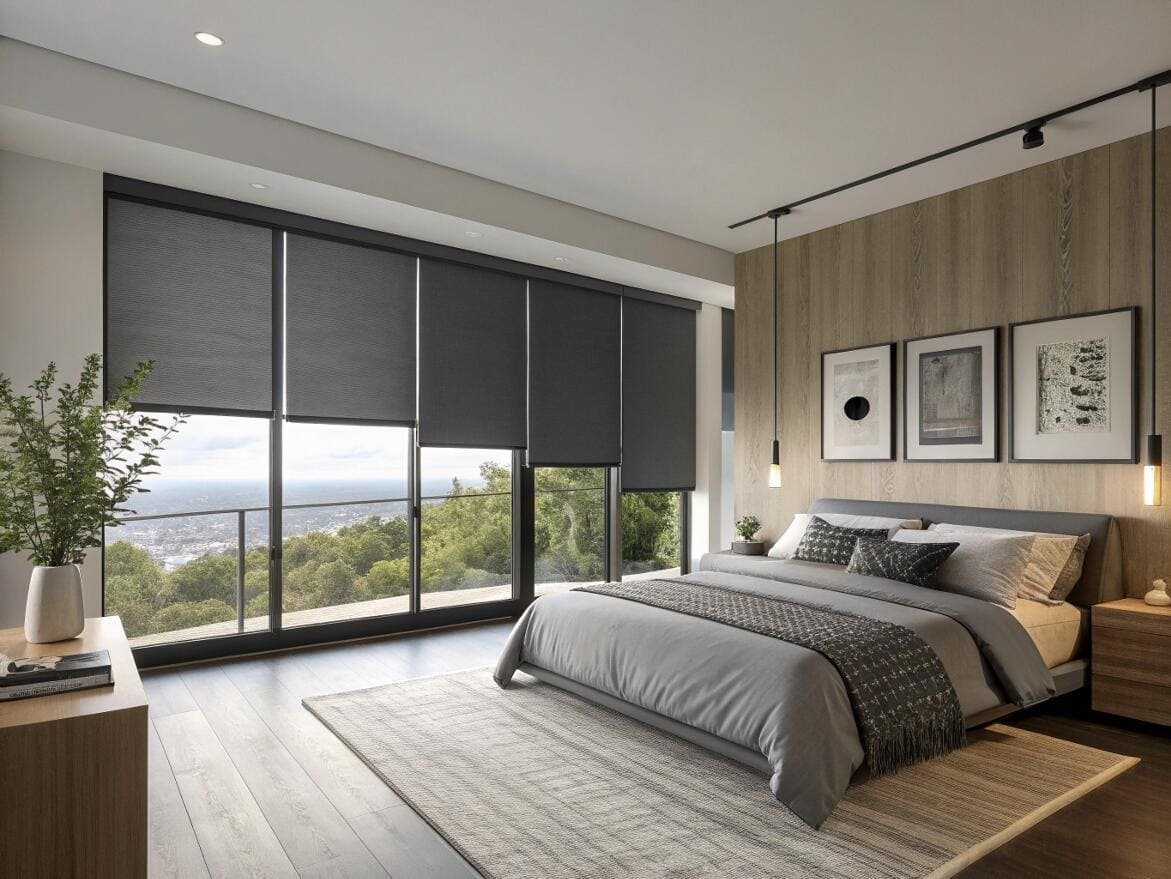
This is a common issue, especially for day sleepers. Standard blackout curtains or inside-mount shades will almost always have small gaps where light can seep through. While a blackout fabric might block 100% of light, the installation method is what determines the final result. For my clients who need absolute darkness—like in-home theaters or for light-sensitive sleepers—I always specify a roller shade with a LightGuard 360™ system or similar side and top channels. These channels are small frames that guide the fabric and create a light-proof seal, turning room darkening into a true blackout experience. It's a technical detail, but it makes all the difference in performance.
Which shades offer the best of both worlds?
You need privacy at night and soft, natural light during the day. You don't want to choose between blackout and light filtering, you want a single solution that does both.
Dual roller shades, also called day and night blinds, are the ideal solution. They combine two separate fabric layers—one light-filtering and one blackout—on a single bracket. This allows you to switch between soft daylight and complete privacy and darkness as needed.

This is the ultimate engineered solution for modern living spaces, especially bedrooms and living rooms. A client of mine recently installed dual motorized shades in their master bedroom. During the day, they keep the sheer solar shade down. It cuts glare and blocks UV rays, protecting their new hardwood floors, while still bathing the room in beautiful, soft light. At night, with a single button press, the blackout roller shade lowers behind the sheer one, giving them hotel-level darkness and privacy. It's the perfect example of moving past a simple "either/or" choice and designing a truly adaptive light management system[^6] for your lifestyle.
Conclusion
The choice between blackout and light-filtering shades is now a strategic part of designing a healthy, private, and efficient home—a true exercise in lifestyle system engineering.
---
[^1]: Understand the relationship between light exposure and sleep health.
[^2]: Learn about the privacy implications of different window shades during nighttime.
[^3]: Explore the connection between light exposure and overall sleep health.
[^4]: Learn about the benefits and uses of sheer fabrics in window coverings.
[^5]: Understand how light influences your body's natural sleep-wake cycle.
[^6]: Understand how a light management system can optimize your living space.
Partner with VelaBlinds for Your Next Project
Smart window treatments shouldn't be complicated. After working with 500+ distributors and contractors worldwide, I've streamlined the process to get you quality products, competitive pricing, and reliable support - every time.
Why project professionals choose VelaBlinds:
- ✅ Fast, Accurate Quotes - Detailed specs and pricing within 24 hours
- ✅ Transparent Pricing - No hidden fees, volume discounts clearly outlined
- ✅ Quality Assurance - Direct partnerships with certified OEM manufacturers
- ✅ Project Support - Dedicated account manager from quote to delivery
Start your next project:
📧 Quick Quote: Send your requirements to info@velablinds.com
📱 Direct Contact: WhatsApp +86 137 2012 8317
🌐 Browse Solutions: https://velablinds.com/
📁 Product Resources: Access spec sheets, catalogs & project files
Paul Chen, Founder
"I built VelaBlinds to solve the real challenges I faced as a project buyer - long lead times, unclear specs, and unreliable suppliers. Let's discuss how we can power your projects with smarter blinds."
Serving distributors and contractors across North America, Europe, and Australia since 2018.

